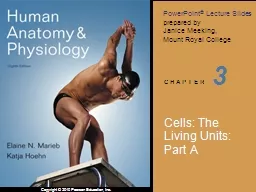

Figure 34f Some glycoproteins proteins bonded to short chains of sugars serve as identification tags that are specifically recognized by other cells f Cellcell recognition Glycoprotein ID: 775197
Download Presentation The PPT/PDF document " 3 Cells: The Living Units: Part A" is the property of its rightful owner. Permission is granted to download and print the materials on this web site for personal, non-commercial use only, and to display it on your personal computer provided you do not modify the materials and that you retain all copyright notices contained in the materials. By downloading content from our website, you accept the terms of this agreement.
Slide1
3
Cells: The Living Units: Part A
Slide2Figure 3.4f
Some glycoproteins (proteins bonded
to short chains of sugars) serve as
identification tags that are specifically recognized by other cells.
(f) Cell-cell recognition
Glycoprotein
Slide3Membrane Junctions
Three types:
Tight junction
Desmosome
Gap junction
Slide4Membrane Junctions: Tight Junctions
Prevent fluids and most molecules from moving between cells
Where might these be useful in the body?
Slide5Figure 3.5a
Interlocking
junctional proteins
Intercellular
space
Plasma membranes
of adjacent cells
Microvilli
Intercellular
space
Basement membrane
(a) Tight
junctions:
Impermeable junctions prevent molecules
from passing through the intercellular space.
Slide6Membrane Junctions: Desmosomes
“Rivets” or “spot-welds” that anchor cells together
Where might these be useful in the body?
Slide7Figure 3.5b
Intercellular space
Plasma membranes
of adjacent cells
Microvilli
Intercellular
space
Plaque
Linker glycoproteins
(cadherins)
Intermediate
filament (keratin)
(b) Desmosomes:
Anchoring junctions bind adjacent cells together
and help form an internal tension-reducing network of fibers.
Basement membrane
Slide8Membrane Junctions: Gap Junctions
Transmembrane proteins form pores that allow small molecules to pass from cell to cell
For spread of ions between cardiac or smooth muscle cells
Slide9Figure 3.5c
Plasma membranes
of adjacent cells
Microvilli
Intercellular
space
Intercellular
space
Channel
between cells
(connexon)
(c) Gap junctions:
Communicating junctions allow ions and small mole-
cules to pass from one cell to the next for intercellular communication.
Basement membrane
Slide10Membrane Transport
Plasma membranes are selectively permeable
Some molecules easily pass through the membrane; others do not
Slide11Types of Membrane Transport
Passive processes
No cellular energy (ATP) required
Substance moves down its concentration gradient
Active processes
Energy (ATP) required
Occurs only in living cell membranes
Slide12Passive Processes
What determines whether or not a substance can passively permeate a membrane?Lipid solubility of substanceChannels of appropriate sizeCarrier proteins
PLAY
Animation: Membrane Permeability
Slide13Passive Processes
Simple diffusion
Carrier-mediated facilitated diffusion
Channel-mediated facilitated diffusion
Osmosis
Slide14Passive Processes: Simple Diffusion
Nonpolar lipid-soluble (hydrophobic) substances diffuse directly through the phospholipid bilayer
PLAY
Animation: Diffusion
Slide15Figure 3.7a
Extracellular fluid
Lipid-
soluble
solutes
Cytoplasm
(a) Simple diffusion
of fat-soluble molecules
directly through the phospholipid bilayer
Slide16Passive Processes: Facilitated Diffusion
Certain lipophobic molecules (e.g., glucose, amino acids, and ions) use carrier proteins or channel proteins, both of which:
Exhibit specificity (selectivity)
Are saturable; rate is determined by number of carriers or channels
Can be regulated in terms of activity and quantity
Slide17Facilitated Diffusion Using Carrier Proteins
Transmembrane integral proteins transport specific polar molecules (e.g., sugars and amino acids)
Binding of substrate causes shape change in carrier
Slide18Figure 3.7b
Lipid-insoluble
solutes (such as
sugars or amino
acids)
(b) Carrier-mediated facilitated diffusion
via a protein
carrier specific for one chemical; binding of substrate
causes shape change in transport protein
Slide19Facilitated Diffusion Using Channel Proteins
Aqueous channels formed by transmembrane proteins selectively transport ions or water
Two types:
Leakage channels
Always open
Gated channels
Controlled by chemical or electrical signals
Slide20Figure 3.7c
Small lipid-
insoluble
solutes
(c) Channel-mediated facilitated diffusion
through a channel protein; mostly ions
selected on basis of size and charge
Slide21Passive Processes: Osmosis
Movement of solvent (water) across a selectively permeable membrane
Water diffuses through plasma membranes:
Through the lipid bilayer
Through water channels called aquaporins (AQPs)
Slide22Figure 3.7d
Water
molecules
Lipid
billayer
Aquaporin
(d) Osmosis
, diffusion of a solvent such as
water through a specific channel protein
(aquaporin) or through the lipid bilayer
Slide23Passive Processes: Osmosis
Water concentration is determined by solute concentration because solute particles displace water molecules
Osmolarity: The measure of total concentration of solute particles
When solutions of different osmolarity are separated by a membrane, osmosis occurs until equilibrium is reached
Slide24Figure 3.8a
(a)
Membrane permeable to both solutes and water
Solute and water molecules move down their concentration gradients
in opposite directions. Fluid volume remains the same in both compartments.
Left
compartment:
Solution withlower osmolarity
Rightcompartment:Solution with greater osmolarity
Membrane
H2O
Solute
Solutemolecules(sugar)
Both solutions have the
same osmolarity: volume
unchanged
Slide25Figure 3.8b
(b)
Membrane permeable to water, impermeable to solutes
Both solutions have identical
osmolarity, but volume of the
solution on the right is greater
because only water is free to move
Solute molecules are prevented from moving but water moves by osmosis.Volume increases in the compartment with the higher osmolarity.
Leftcompartment
Rightcompartment
Membrane
Solutemolecules(sugar)
H
2
O
Slide26Importance of Osmosis
When osmosis occurs, water enters or leaves a cellChange in cell volume disrupts cell function
PLAY
Animation: Osmosis
Slide27Tonicity
Tonicity: The ability of a solution to cause a cell to shrink or swell
Isotonic: A solution with the same solute concentration as that of the cytosol
Hypertonic: A solution having greater solute concentration than that of the cytosol
Hypotonic: A solution having lesser solute concentration than that of the cytosol
Slide28Figure 3.9
Cells retain their normal size and
shape in isotonic solutions (samesolute/water concentration as insidecells; water moves in and out).
Cells lose water by osmosis and shrink in a hypertonic solution (contains a higher concentration of solutes than are present inside the cells).
(a) Isotonic solutions
(b) Hypertonic solutions
(c) Hypotonic solutions
Cells take on water by osmosis until
they become bloated and burst (lyse)
in a hypotonic solution (contains a
lower concentration of solutes than
are present in cells).
Slide29Summary of Passive Processes
Also see Table 3.1
Process
Energy Source
Example
Simple diffusion
Kinetic energy
Movement of O
2
through phospholipid bilayer
Facilitated diffusion
Kinetic energy
Movement of glucose into cells
Osmosis
Kinetic energy
Movement of H
2
O through phospholipid bilayer or AQPs